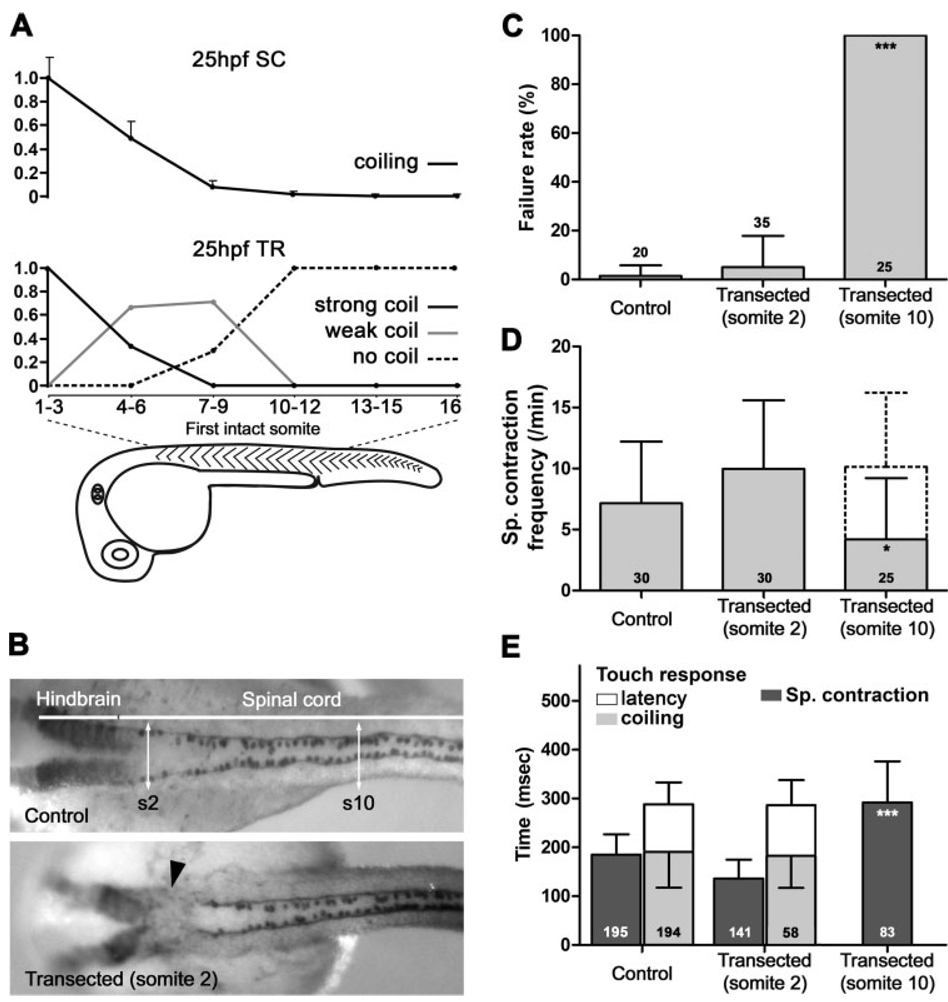Figure 4.
Circuitry necessary for touch response resides in the anterior spinal cord. (A) The trunks of embryos at 25 hpf were imaged after complete transection at the level of somites indicated. Movies were quantified for spontaneous coiling frequency normalized to the most rostral transection (upper panel). Embryo trunks from complete transections at the levels indicated were analyzed for touch response. Responses were recorded as the percentage of embryos showing strong, weak, or no coils (lower panel; n = 6, 9, 7, 13, 5, and 3, respectively, for each lesion bin; error bars = s.e.). (B) Immunolabeling with GFP antibodies in ngn1: GFP transgenic zebrafish line [Tg(−3.1ngn1:GFP)sb2] reveals RB cell bodies and their axons (upper panel). The level of the hindbrain and spinal cord along the anteroposterior axis is indicated, as well as the levels of somite 2 (s2) and somite 10 (s10). Transection at the level of somite 2 (arrowhead, lower panel) abolishes immunolabeling at that level. (C) Failure rate of the touch response, (D) frequency of the spontaneous coils, and (E) kinetic analysis of the both behaviors for control embryos or embryos with spinal cord transections at somites 2 and 10 measured at 25 hpf. Anomalous spontaneous activity (pendulum-like motion) is included as a dashed box. Stacked bars in D and E are cumulative. The number of embryos analyzed is indicated in each column in C and D, while the number of movements analyzed is indicated in each column in E (error bars = s.d. in C–E).

